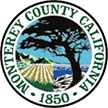Cal Interpreting & Translations (CIT) offers Catalan interpreters and translators with legal, medical, and specialty experience, including criminal and civil matters, employee meetings, engineering, patent cases, labor disputes, immigration, and more.
CIT offers comprehensive Catalan language services including interpretation, translation, and transcription, 24 hours a day, 7 days a week, worldwide. Our interpreters and translators are native speakers who have been screened, certified, provided credentials, field tested, and kept up to date with developments in both English and Catalan languages through means such as lectures, conferences, and travel. Cal Interpreting & Translations’ Catalan language interpreters and translators possess in depth knowledge of the Catalan language, as well as of the culture and history of the Catalan people, allowing them to provide informed and complete interpretation and translation.
Catalan was named for the medieval Principality of Catalonia, which existed in modern-day northeastern Spain. Catalan is the only official language of Andorra in the Iberian Peninsula, and a “co-official” language of the Spanish communities of Catalonia, Valencia, and the Balearic Islands. Catalan also has semi-official language status AlgheroIt, an Italian commune. Catalan also has speakers in the east of Aragon, and in some areas of France. These territories outside of Spain are often referred to as Països Catalans or “Catalan Countries”.
The Catalan language shares many qualities with other nearby Romance languages such as Spanish, Italian, Sardinian, Occitan. Though Catalan is spoken mainly on the Iberian Peninsula, it differs greatly from the Iberian Romance group, Spanish and Portuguese. These differences are mainly in relation to grammar and pronunciation, but especially vocabulary, which is closest to Occitan. Vocabulary is, to a lesser extent, closely related to Gallo-Romance languages such as French, Franco-Provençal, and Gallo-Italian.
Ethnologue, the premier linguistics and etymology journal, finds the lexical similarity between Catalan and other Romance languages to be as follows: 87% with Italian; 85% with Portuguese and Spanish; 76% with Ladin; 75% with Sardinian; 73% with Romanian. Despite this, during much of the history of the Catalan language, especially during the Francoist dictatorship (1939–1975), the Catalan language was often marginalized as only a dialect of Spanish. This perspective was founded in a political context and has no validity linguistically. Spanish and Catalan have important differences in their sounds, lexicon, and grammar. Different outcomes linguistically resulted among Spanish and Catalan after the division of the Gothic Superstate. For example, the Catalan word rostir “to roast”, is of Germanic origin, in contrast to the Spanish asar, of Latin origin. In Catalan, the word templa, or “temple”, is of Latin origin, whereas the Spanish sien, is of Germanic origin.


No matter what your needs may be, we can and are ready to assist you now. We have translators and interpreters standing by 24/7.

CIT's interpreter is such a rockstar, and it’s so great to have him as a lead interpreter for our Board meetings. About Our Interpreters 
Thank you for always being able to handle emergency interpreting assignments with ease. About Urgent Requests 
Thank you for always being able to handle emergency interpreting assignments with ease. About Urgent Requests 
Your translation rates are more competitive than other language service providers I used in the past. About Pricing 

Professionalism matters at CIT. We respond to request inside 24 hours.







